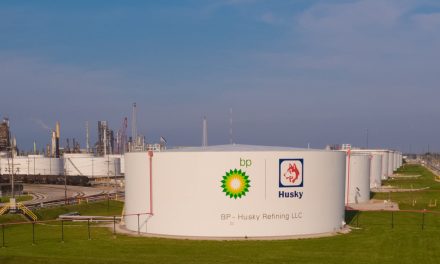Global Supply Eludes Rebalancing
- Bulls talk fifty dollar price floor
- U.S. production still falling
- Gasoline demand falls short (slightly) of record
- Natural gas rally seen as short covering
Sincerely, Alan Levine Chairman, Powerhouse
Table covers crude oil and principal products. Other products, including residual fuel oil and “other oils” are not shown, and changes in the stocks of these products are reflected in “Total Petroleum Products.” Statistics Source: Energy Information Administration “Weekly Petroleum Status Report” available at www.eia.doe.gov
The Matrix
Driven more by aspiration than reality, bulls are talking fifty dollars as price support for crude oil. They point to a series of disruptions to production as the reason to expect prices to advance even further. Regrettably for this position, these events, including Nigerian shortfalls, reduced investment in Iraq, Venezuelan social unrest and fires in Canada are likely to be short lived. The net effect of these supply constraints is hard to pin down, especially with new supply as offsets. New production from Iraq, Iran and the UAE come to 600,000 barrels per day. This puts a serious crimp in the “disruption bulls’ “case.
What is real for crude oil bulls is the slow diminution of shale oil production. U.S. output has moved lower in recent months, particularly in North Dakota, Texas, Colorado, Oklahoma and Texas. Texas alone lost 40,000 barrels daily during March. One source estimates 2016 production in the United States to be down over 200,000 barrels daily. But if prices hold around $50, output could slow its decline and hinder the global “rebalancing” sought by supply planners.
In the United States, there may be signs of renewed interest in drilling. The Casper, Wyoming Star Tribune reported “Local CEOs are finalizing permits, reassessing drilling plans and readying teams to complete an inventory of unfracked wells,” reflecting crude oil around $50.
As usual, plumbing Saudi Arabia’s intentions lies at the center of efforts to determine when oil markets are rebalanced. One analysis estimates Saudi exports to be running around seven million barrels daily. Saudi Arabia signaled willingness to limit expansion of supply at the just-completed OPEC meeting. It is not yet clear if this is change in policy or a concession to flagging OPEC influence in global oil policy.
Iran has become OPEC’s price bear. It has argued for exemption from any production constraint until the country has recovered to levels achieved before the sanctions now ended. This could limit further advances in the crude oil price. As a practical matter, the oil minister of the United Arab Emirates noted that “low oil prices were pushing all countries to limit production, whether they say so or not.”
Supply/Demand Balances
Supply/demand data in the United States for the week ending May 27, 2016 were released by the Energy Information Administration.
Total commercial stocks of petroleum decreased 2.7 million net barrels during the week ending May 27th, 2016.
Draws were reported in stocks of gasoline, K-jet fuel, distillates, and residual fuel oil. Builds were reported in stocks of propane and other oils. Fuel ethanol stocks were unchanged from the previous report week.
Crude oil supplies in the United States decreased to 535.7 million barrels, a draw of 1.4 million barrels.
Crude oil supplies decreased in four of the five of the PAD Districts. PAD District 1 (East Coast) crude oil stocks fell 0.7 million barrels, PADD 2 (Midwest) crude stocks decreased 0.6 million barrels, PADD 3 (Gulf Coast) stocks declined 0.9 million barrels, and PADD 4 (Rockies) stocks fell 0.1 million barrels. PAD District 5 (West Coast) crude oil stocks increased 1.0 million barrels.
Cushing, Oklahoma inventories decreased 0.7 million barrels to 66.9 million barrels.
Domestic crude oil production decreased 32,000 barrels daily to 8.735 million barrels per day.
Crude oil imports averaged 7.839 million barrels per day, a daily increase of 524,000 barrels.
Refineries used 89.8 per cent of capacity, an increase of 0.1 percentage point from the previous report week.
Crude oil inputs to refineries decreased 73,000 barrels daily; there were 16.206 million barrels per day of crude oil run to facilities. Gross inputs, which include blending stocks, increased 5,000 barrels to 16.440 million barrels daily.
Total petroleum product inventories saw an increase of 1.3 million barrels from the previous report week.
Gasoline stocks decreased 1.5 million barrels; total stocks are 238.6 million barrels.
Demand for gasoline increased 200,000 barrels per day to 9.716 million barrels daily.
Total product demand decreased 83,000 barrels daily to 20.355 million barrels per day.
Distillate fuel oil supply decreased 1.3 million barrels; total stocks are 149.6 million barrels. National distillate demand was reported at 3.827 million barrels per day during the report week. This was a weekly decrease of 261,000 barrels daily.
Propane stocks increased 1.3 million barrels to 75.4 million barrels. Current demand is estimated at 959,000 barrels per day, a decrease of 196,000 barrels daily from the previous report week.
Natural Gas
According to the Energy Information Administration:
Working gas in the Lower 48 states posted its seventh straight week of net injections. Net injections into storage totaled 82 Bcf during the storage report week, compared with the five-year (2011-15) average of 98 Bcf and last year’s net injection of 126 Bcf during the same week. As a result, the surplus in storage compared with the five-year average declined from the previous week to 753 Bcf, and the surplus compared with year-ago levels decreased to 712 Bcf. The year-over-year storage surplus fell for the seventh consecutive week.
This was the first time in several weeks that injections reached expectations; previously actual additions had fallen below traders’ expectations. Nonetheless, prices rallied. At the close, prices reached levels not seen since early January.
Nonetheless, market action did not seem to be especially bullish. Some observers chalked the rally up to short covering. High inventory levels seem certain to limit price rallies – especially now in the annual weather cycle.
Futures trading involves significant risk and is not suitable for everyone. Transactions in securities futures, commodity and index futures and options on future markets carry a high degree of risk. The amount of initial margin is small relative to the value of the futures contract, meaning that transactions are heavily “leveraged”. A relatively small market movement will have a proportionately larger impact on the funds you have deposited or will have to deposit: this may work against you as well as for you. You may sustain a total loss of initial margin funds and any additional funds deposited with the clearing firm to maintain your position. If the market moves against your position or margin levels are increased, you may be called upon to pay substantial additional funds on short notice to maintain your position. If you fail to comply with a request for additional funds within the time prescribed, your position may be liquidated at a loss and you will be liable for any resulting deficit. Past performance may not be indicative of future results. This is not an offer to invest in any investment program.
Powerhouse is a registered affiliate of Coquest, Inc.
Was this helpful? We’d like your feedback.
Please respond to [email protected]
or call: 202 333-5380
Copyright © 2016 Powerhouse, All rights reserved












